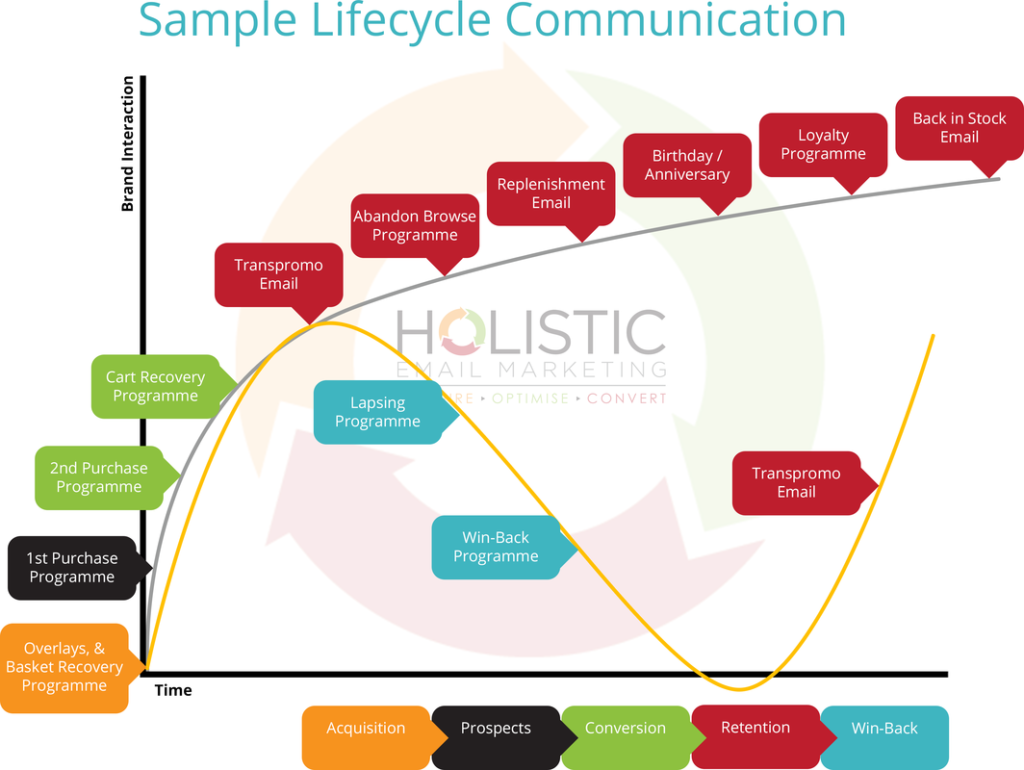Marketing Automation Needs The Human Touch, Too
Automation is one of the best things ever to happen to email. Automation, ironically, puts us as close as we can get to the Holy Grail of marketing communications – the 1:1 message – without having to manually send a message to each of our subscribers.
Instead of sending one message designed to appeal as broadly as possible to the widest range of subscribers, we use data-driven automation to craft highly personalized messages.
These can be behaviour-driven transactional messages sent in response to creating an account, buying or abandoning a product, signing up for a webinar or a whitepaper or not having purchased for a while. Or, they correspond to interest and preference data.
Automation doesn’t take the humanity out of email. Rather, it relies on humans to establish the strategy and create the materials that result in a better email experience on both sides of the email message.
Transitioning away from ‘Just the Facts, Ma’am’
Transactional messages, in particular, have to overcome a major challenge in order to drive the benefits we expect from data and automation.
They often originate outside of the marketing department – most commonly from ecommerce or lead-nurturing platforms – as utilitarian messages conveying essential information (“Your transaction was successful”) instead of customer-focused tools with loftier goals like customer satisfaction and trust, generating return visits and more purchases, upgrading membership status and the like.
After years of programmers owning (and writing) them, more marketers are now taking ownership of these messages and humanizing them with company logos and colours, conversational, service-oriented copy and templates that match marketing messages and become an extension of the engagement strategy along with strictly promotional emails.
Adding the human element
Just because it’s automated doesn’t mean it’s written by machines. Not only do humans create the strategy and the logic behind the scenes of these automated emails, but they also write them! Ensure your copywriter has grasped the powerful nature of these automated messages and crafts persuasive copy designed to resonate with the reader. It’s a missed opportunity if they’re left to someone who is not skilled in the art of writing persuasive and emotional copy.
Personalize your way to success
Dynamic content, determined by data and achieved by automation, help you create the intensely personalized emails that customers value and act on. Three kinds of data can determine which content appears in an individual customer’s message:
- Informed data (what your customers self-report in forms, surveys and preference centers)
- Behavioral data (what they do – browse, view, click on or buy – as well as what they don’t do, such as not opening emails, abandoning shopping carts or breaking off a registration or download session)
- Transactional (what they download or purchase).
5 tips to create effective automated emails
Nowhere is the need for a knowledgeable human touch more important than in creating the rules and content for automated emails, whether those messages advance your marketing goals or seek to build stronger connections with employees, members or customers.
Although automation frees you from the need to create the same email over and over, you do need to spend time up front to create, test and optimize each email series. The tips below will help you organize your time and focus your attention.
1. Identify your objective for each automated email
Always know what you want to achieve with each email or series of automated emails. This will guide your sequencing, follow-up messages and even the tone of voice and images you use in your copy.
What problem are you trying to solve? Maybe you need to convert more free users into paid subscribers, persuade newsletter subscribers to make a first purchase or contact your sales team for a product demonstration.
Naming your programs on the objective helps you focus on the purpose, too. For example, consider renaming your welcome or onboarding email program as your “first-purchase program.” Isn’t that what you really want your new subscriber to do?
2. Leverage your customer touch points

Touchpoints are all the places where your customers encounter your company or brands. Most are tied to behaviour – browsing in your stores, downloading a whitepaper on your website, creating an account or buying something – although inaction can also be a touch point, too. Because these touch points are tied to the customer’s behaviour, their innate nature is very human and personalised – as though a shop assistant has just asked if they can be of assistance.
Map all of the touch points on your customer’s journey – where they first come in contact with you, where they move forward, go backwards or even leave the path entirely.
Then, use major touch points, such as opting into messages, purchasing or failing to respond to a stimulus message, to launch a series of automated emails reflecting your objectives for that touch point.
3. Design emails for customer service
Automated emails are stand-ins for your customer-care team members who can’t step in right away to help when a customer breaks off an account registration, leaves items in a cart or returns again and again to a product page. Or maybe you’re providing a nurturing series – which again replaces a customer service person calling and sending more helpful information.
Because they’re personalized to specific actions, the copy, images, calls to action or requested behaviours in your automated emails need a people-helping-people approach rather than a promotional one. (Although a good customer-service experience is indirectly a great promotion for your brand!)
4. Launch one automated program at a time
If you’re new to email automation, you might be tempted to create two or three (or more) programs all at once to make up for lost time. Resist that urge.
Concentrate your team’s time and energies on one program that will either improve your marketing the most or take the shortest time from concept to launch to measurement and optimization.
Implement > Learn > Optimize > Learn. Follow this simplified format for every automation program you create. Apply everything you learned in the implementation and optimization phases of your first launch to every program afterwards.
Automation is NOT ‘set and forget’
Email automation is like a car engine. You have to go under the hood every so often to make sure it’s running properly.
Do your emails land in the inbox or get routed to the junk folder? Do they generate the activity you want? Is it time to update the copy and images?
Schedule regular checkups to be sure your emails are performing as they should, and tune them up regularly.
Takeaway: Data + humanity = automation success
Moving your email program from labour-intensive broadcast messaging to personalized, data-driven automated programs doesn’t mean sacrificing creativity and human appeal. They work together to create meaningful messages that let your customers know you recognize and value them, one human being to another.
Originally posted on GetResponse
In today’s digital age, marketing automation has revolutionized how we connect with customers. However, to truly resonate, these automated messages must carry a human touch. Explore how blending automation with human creativity can elevate your email marketing strategy.
Ready to enhance your email marketing with a personalized approach? Contact Holistic Email Marketing today to discover how we can help you craft engaging and effective automated email campaigns.

